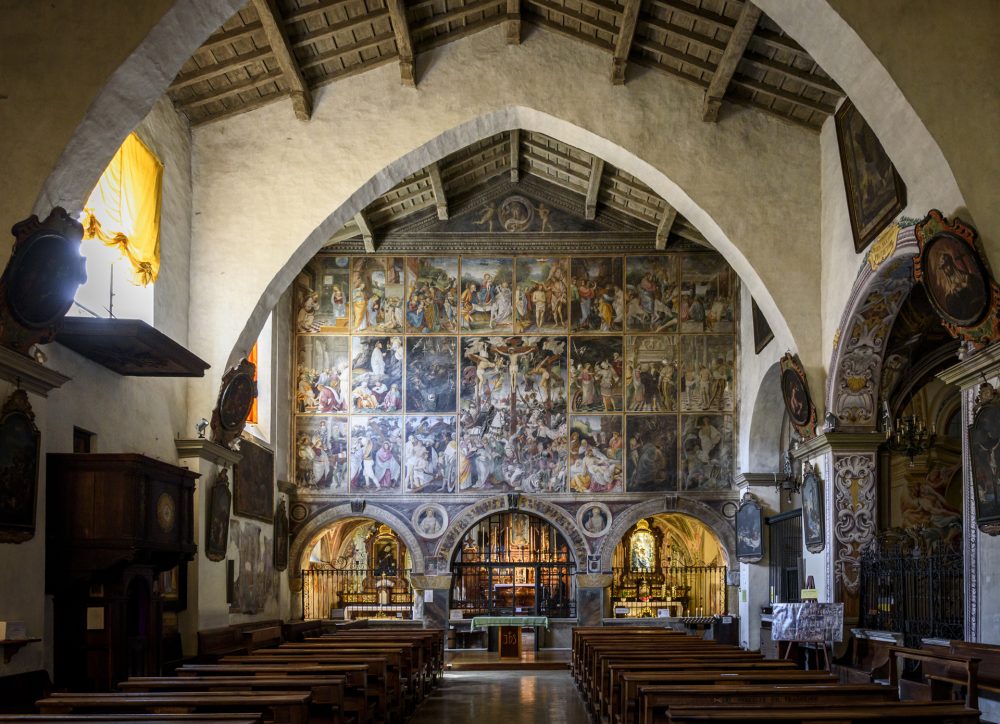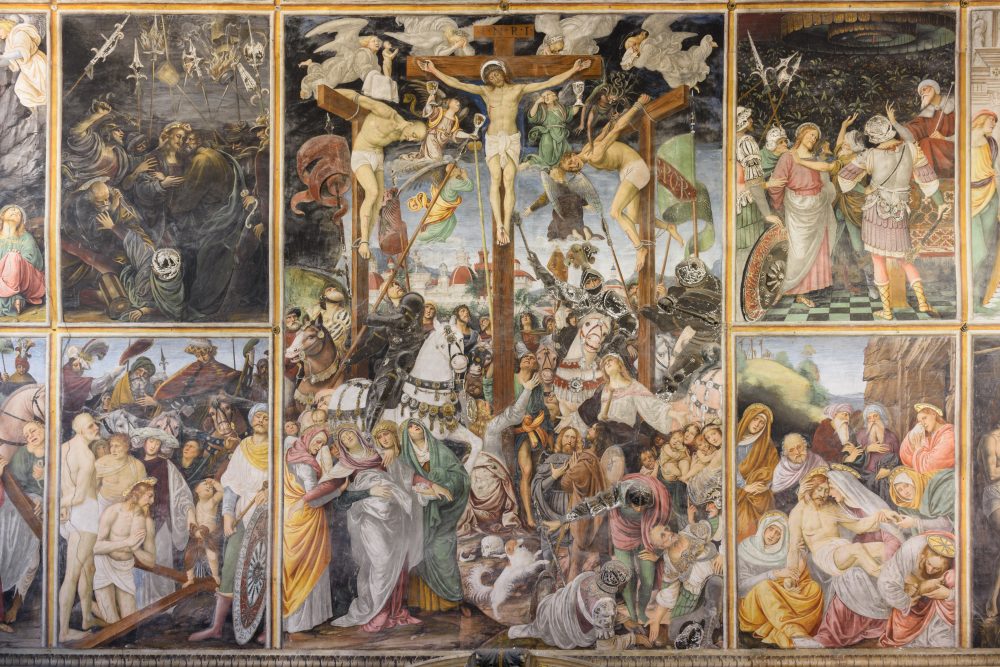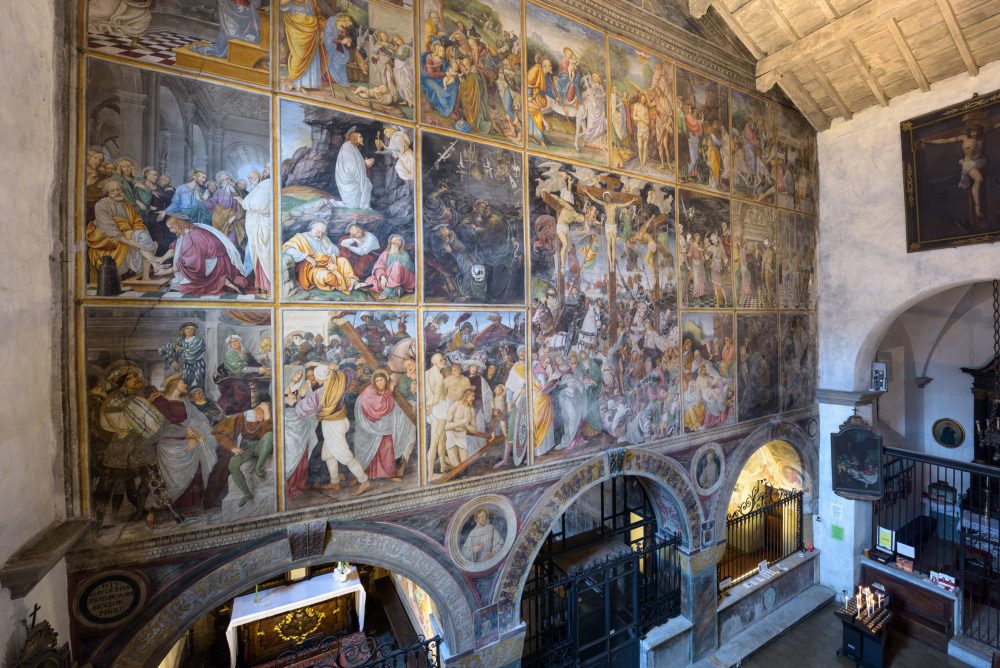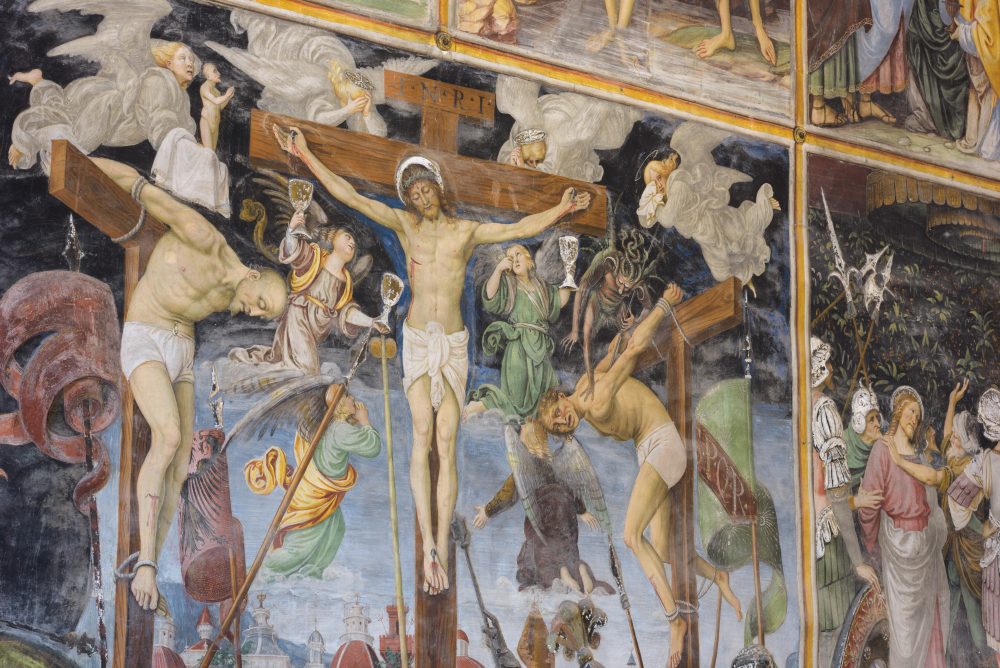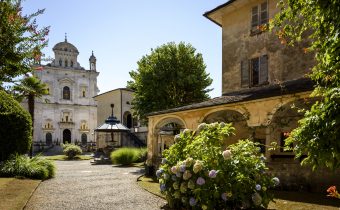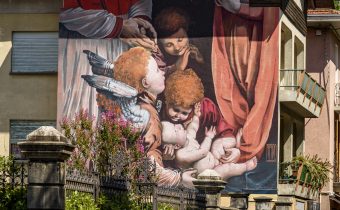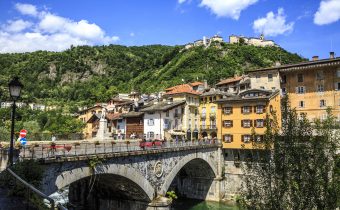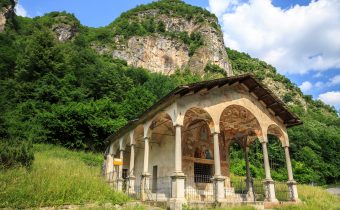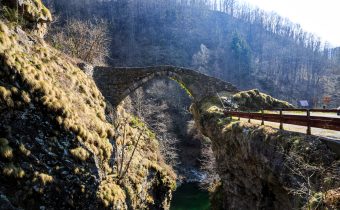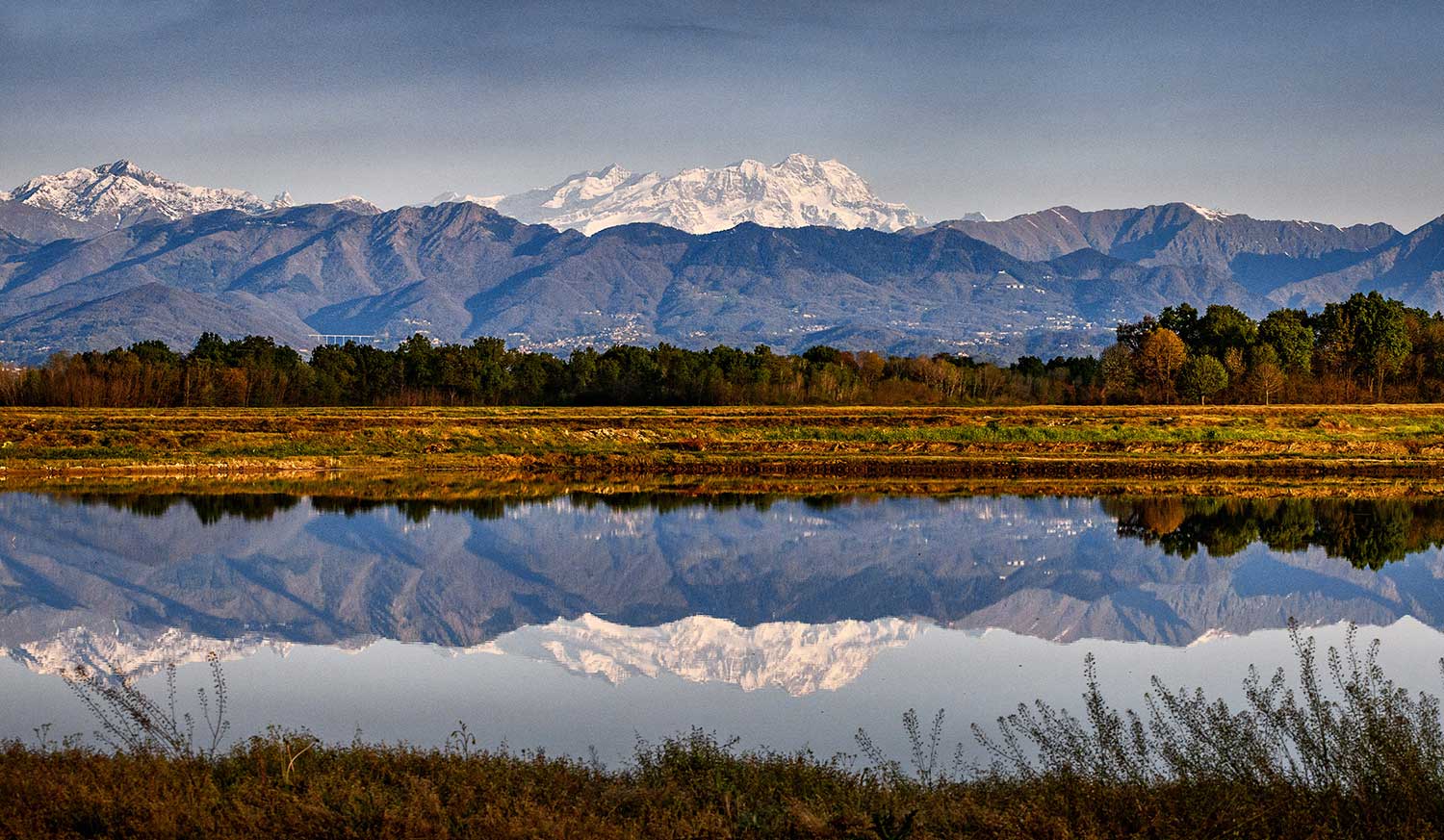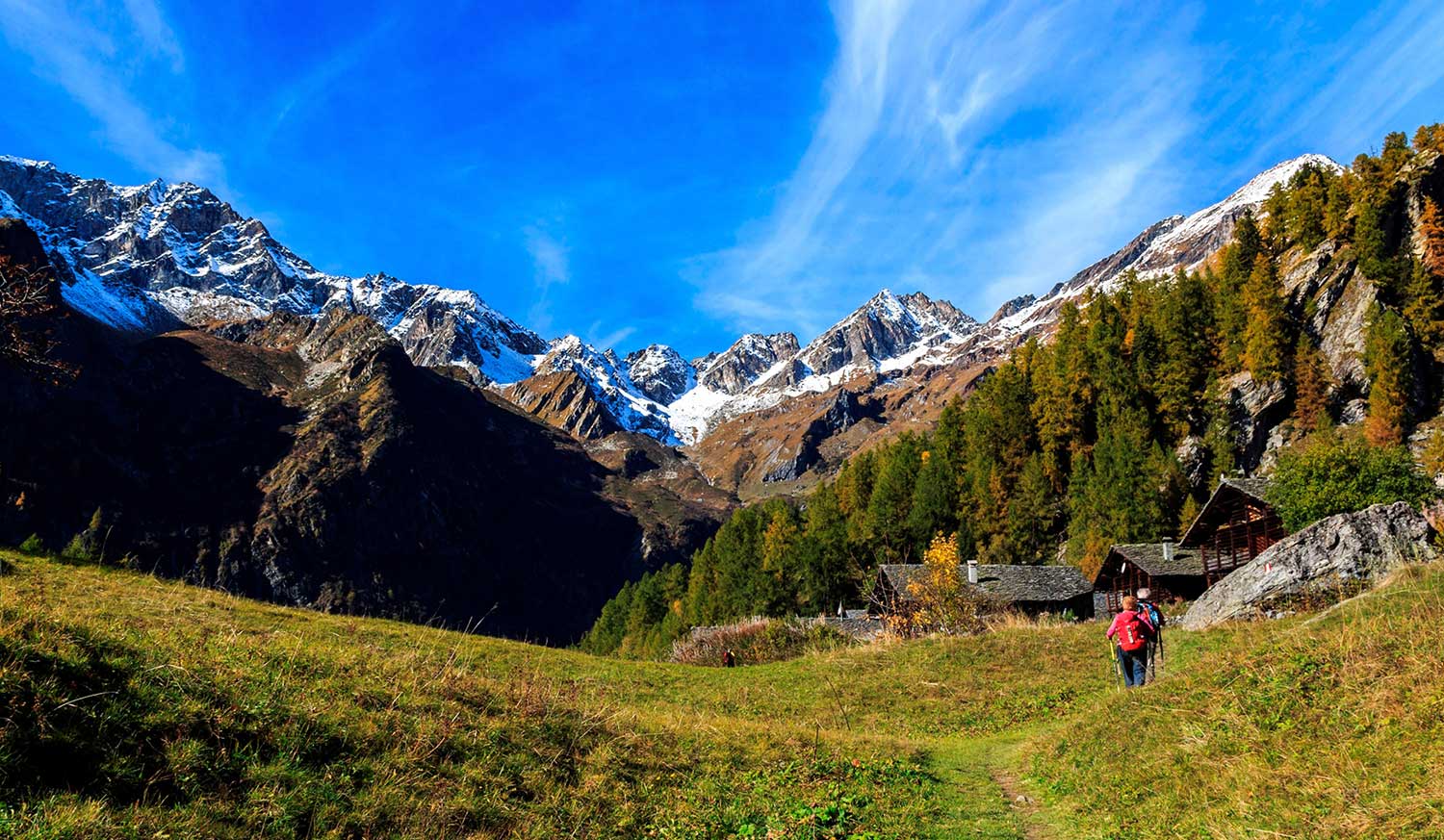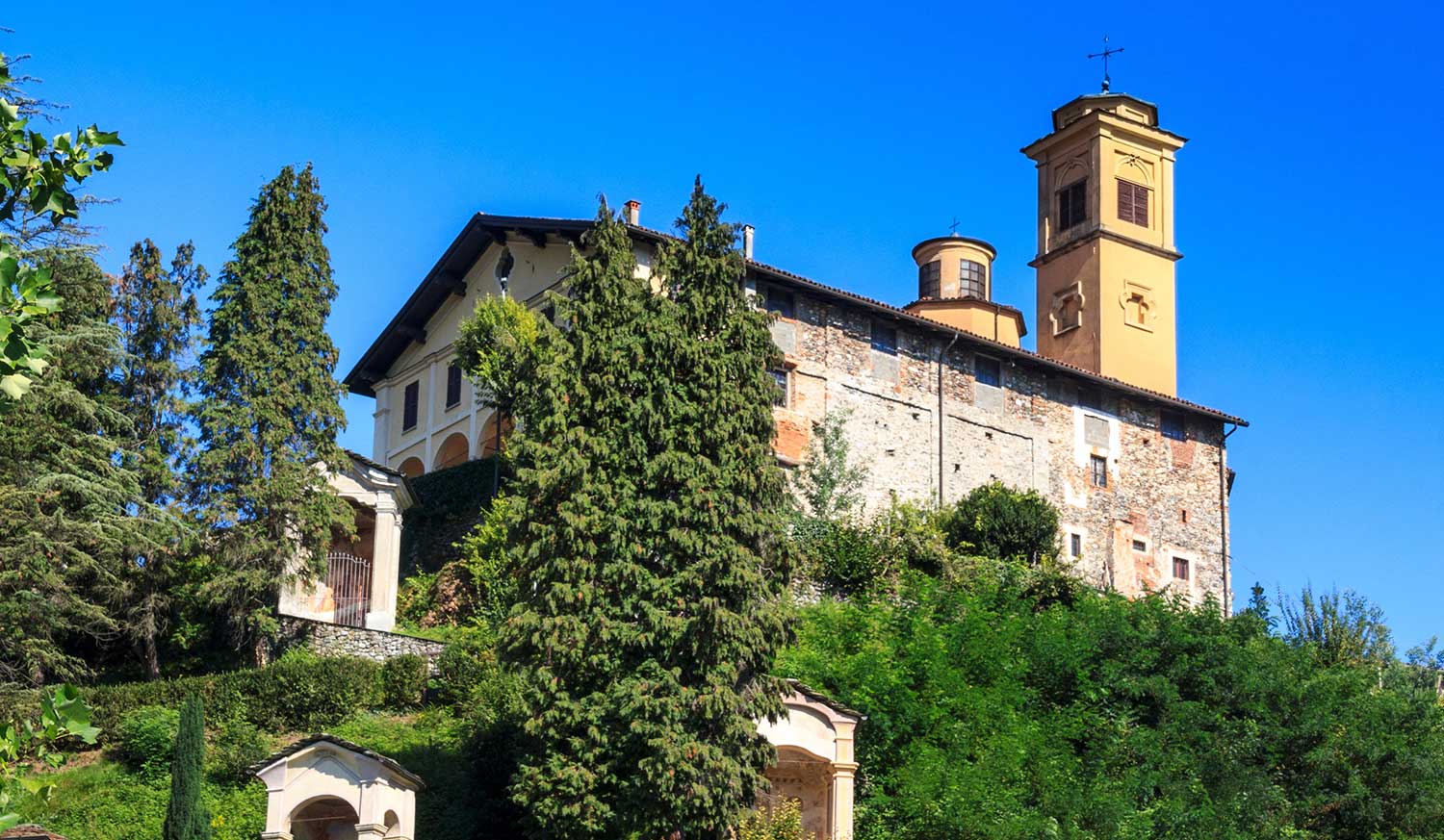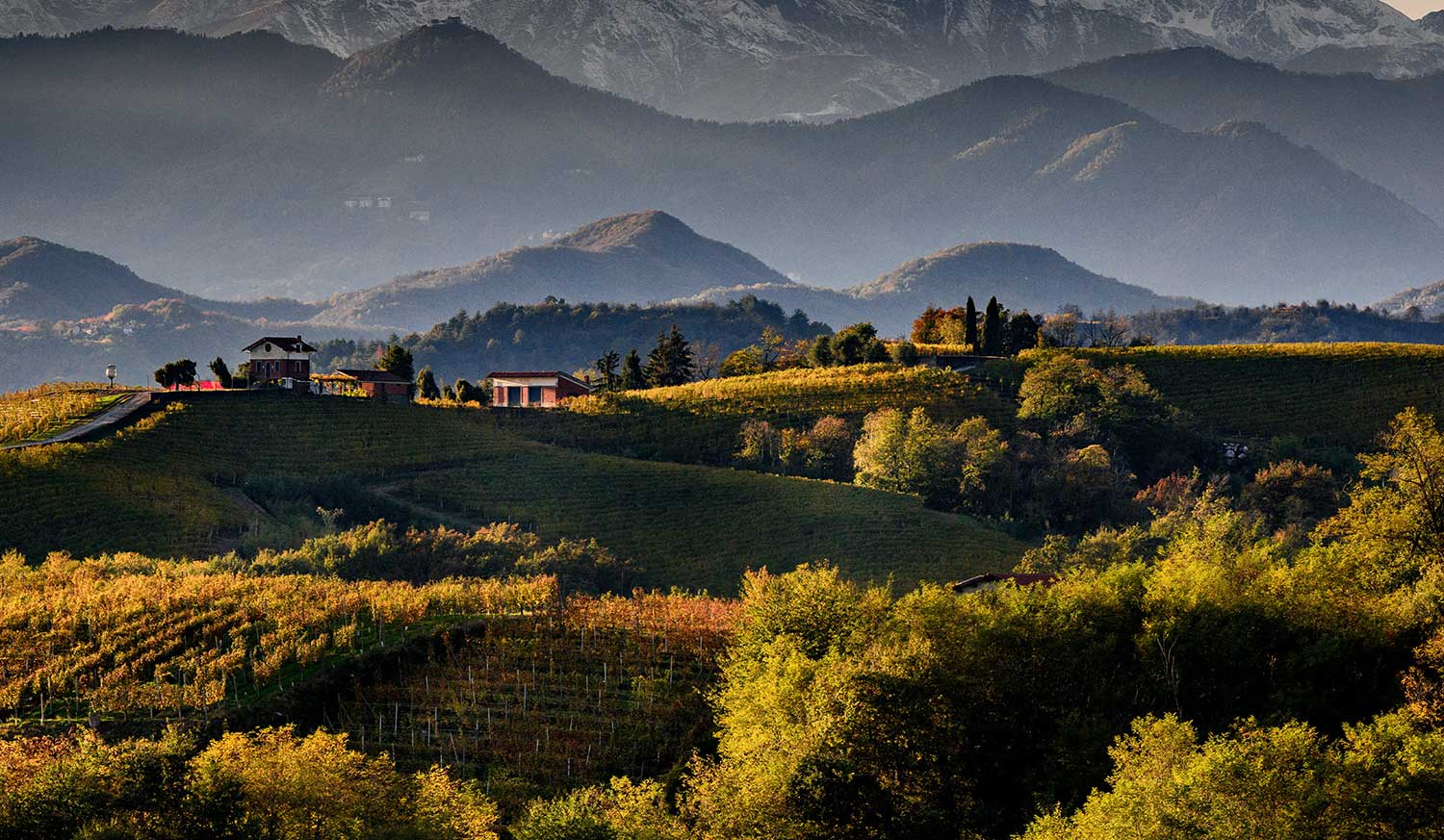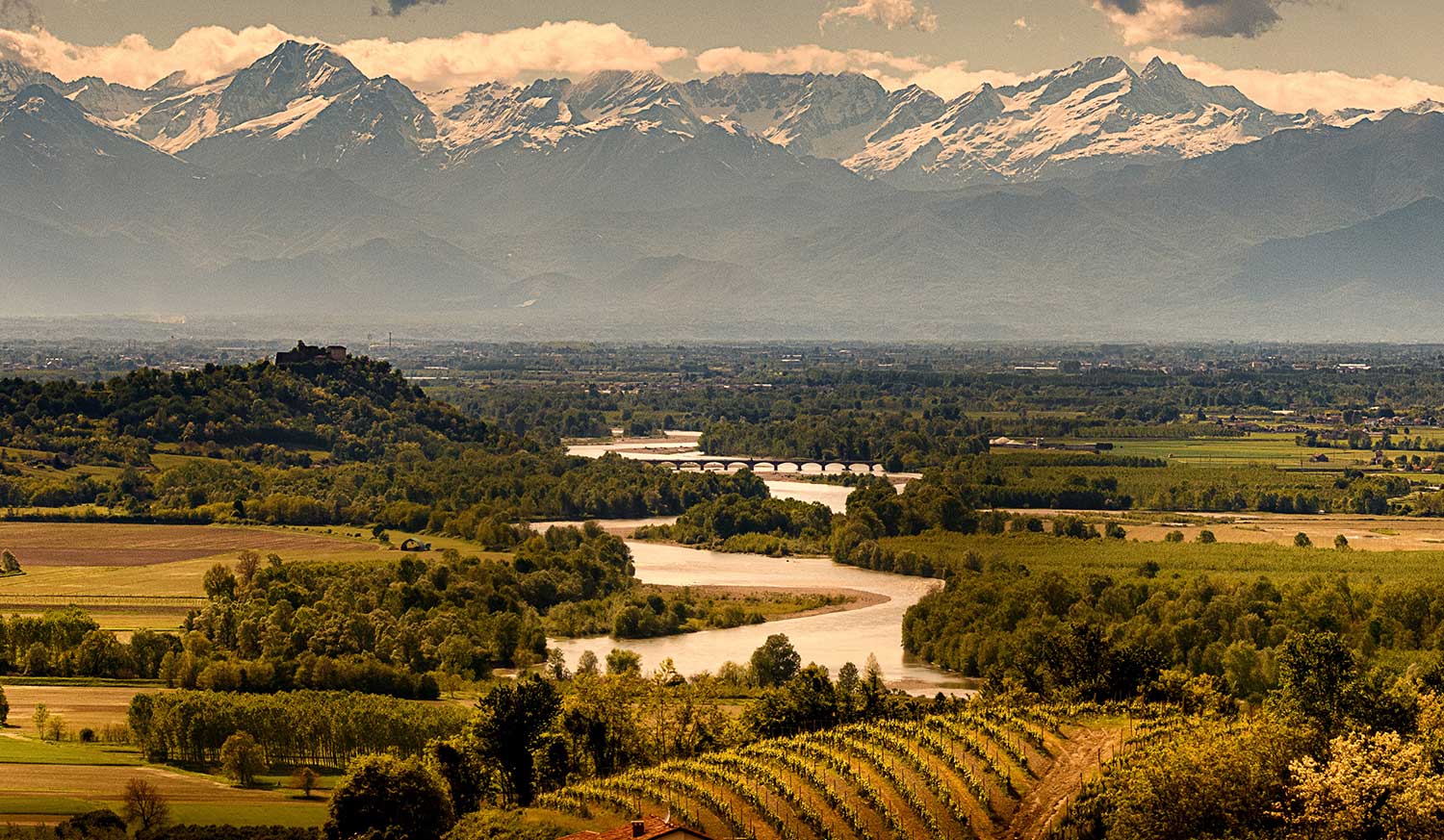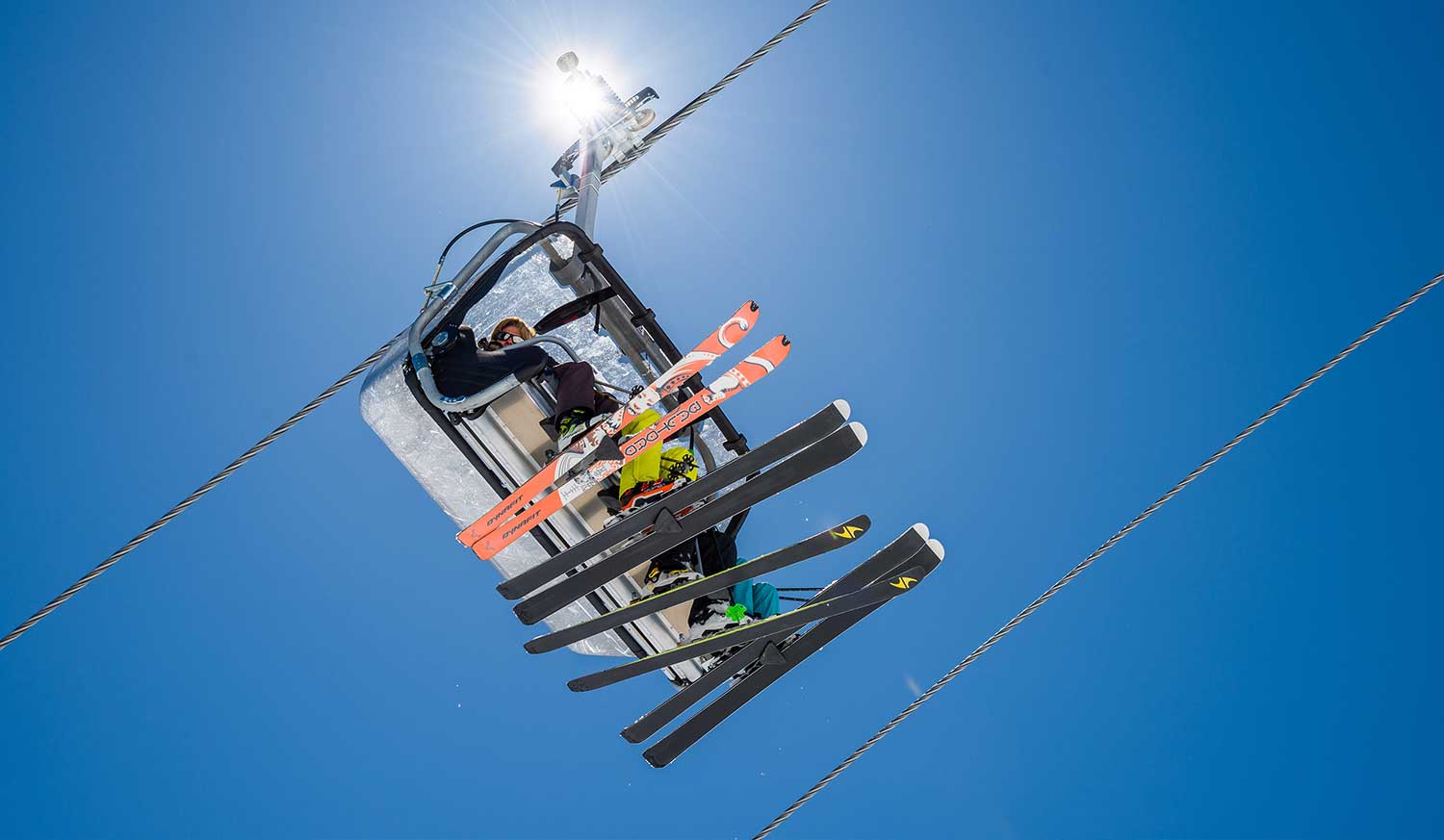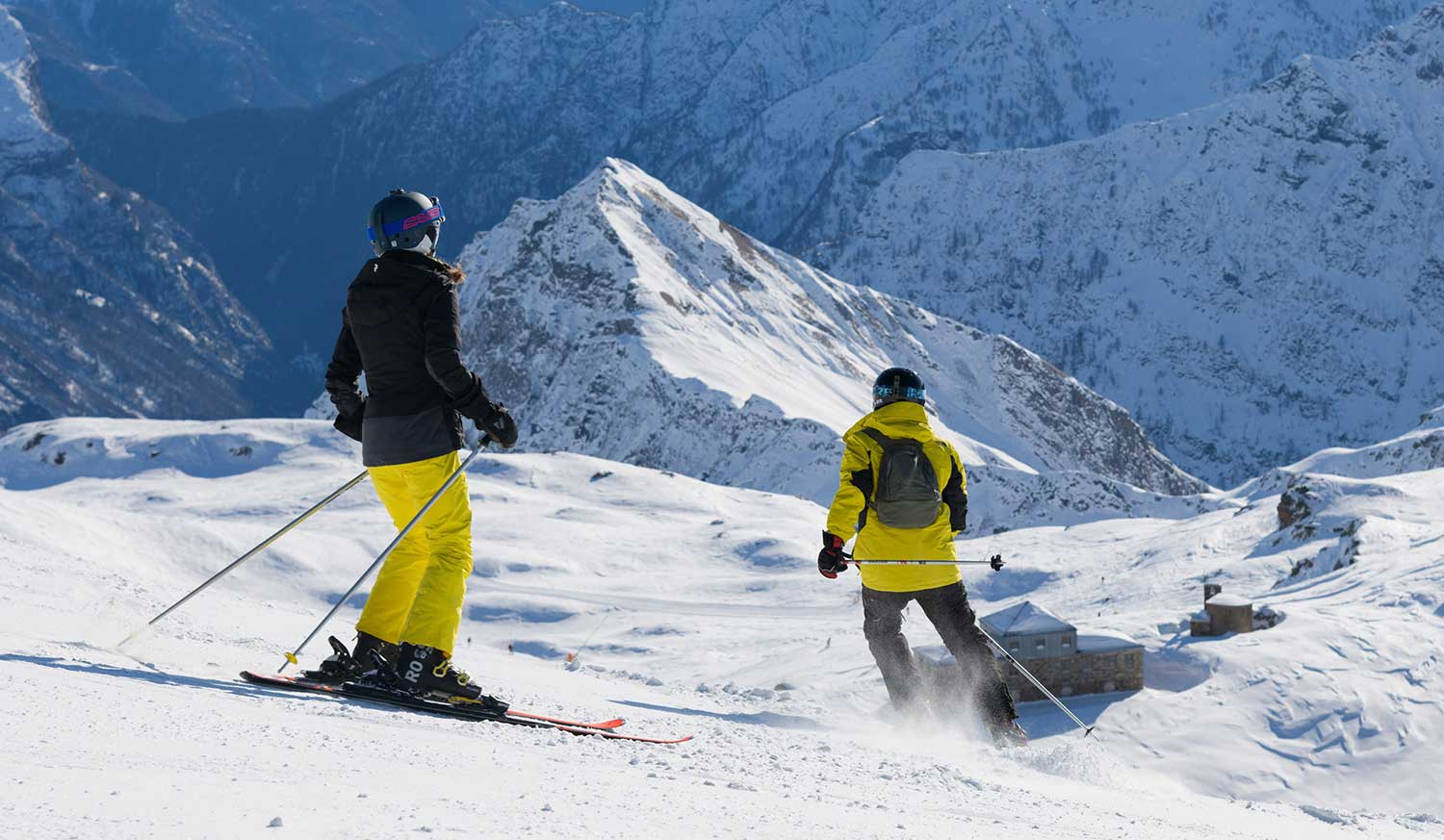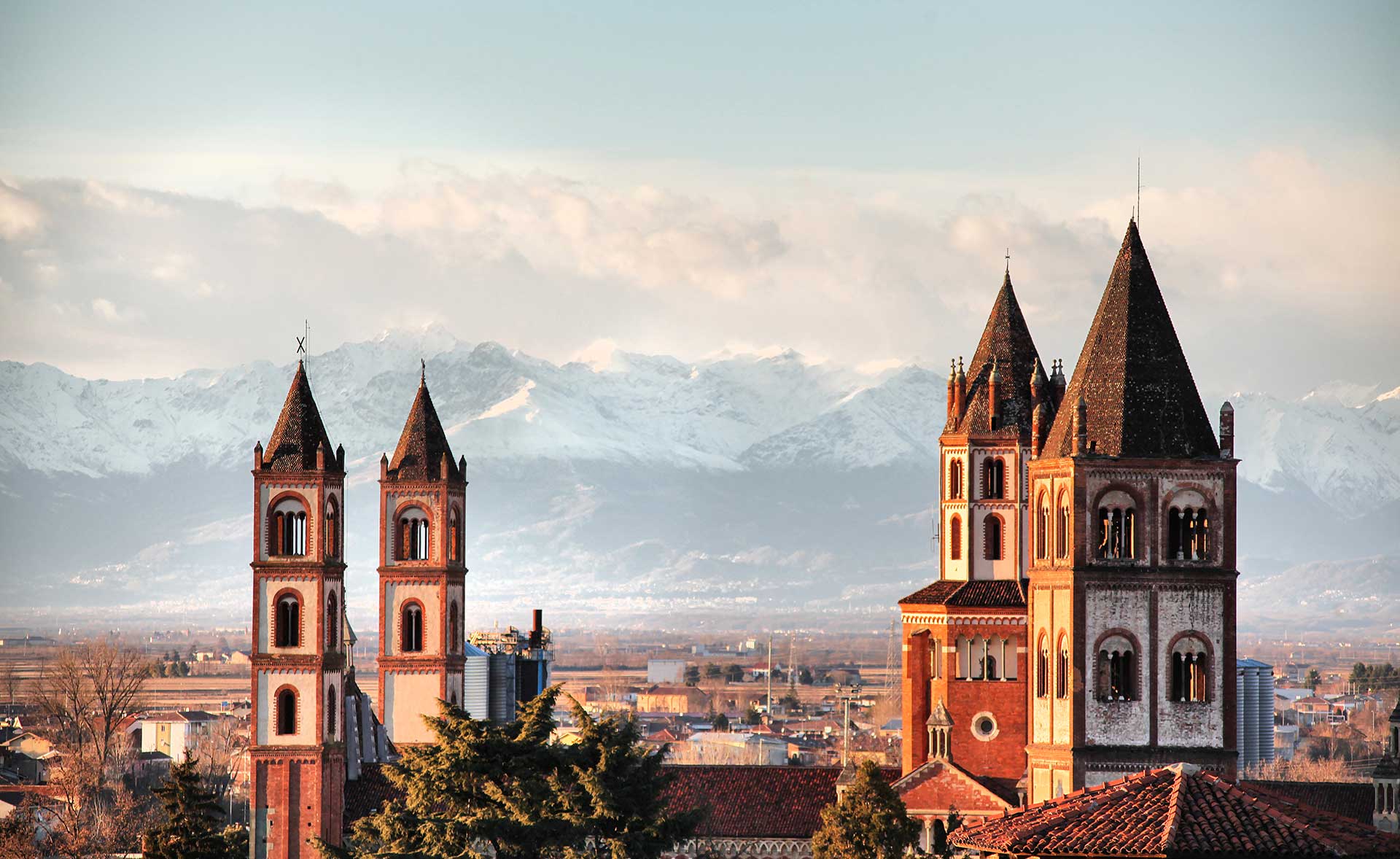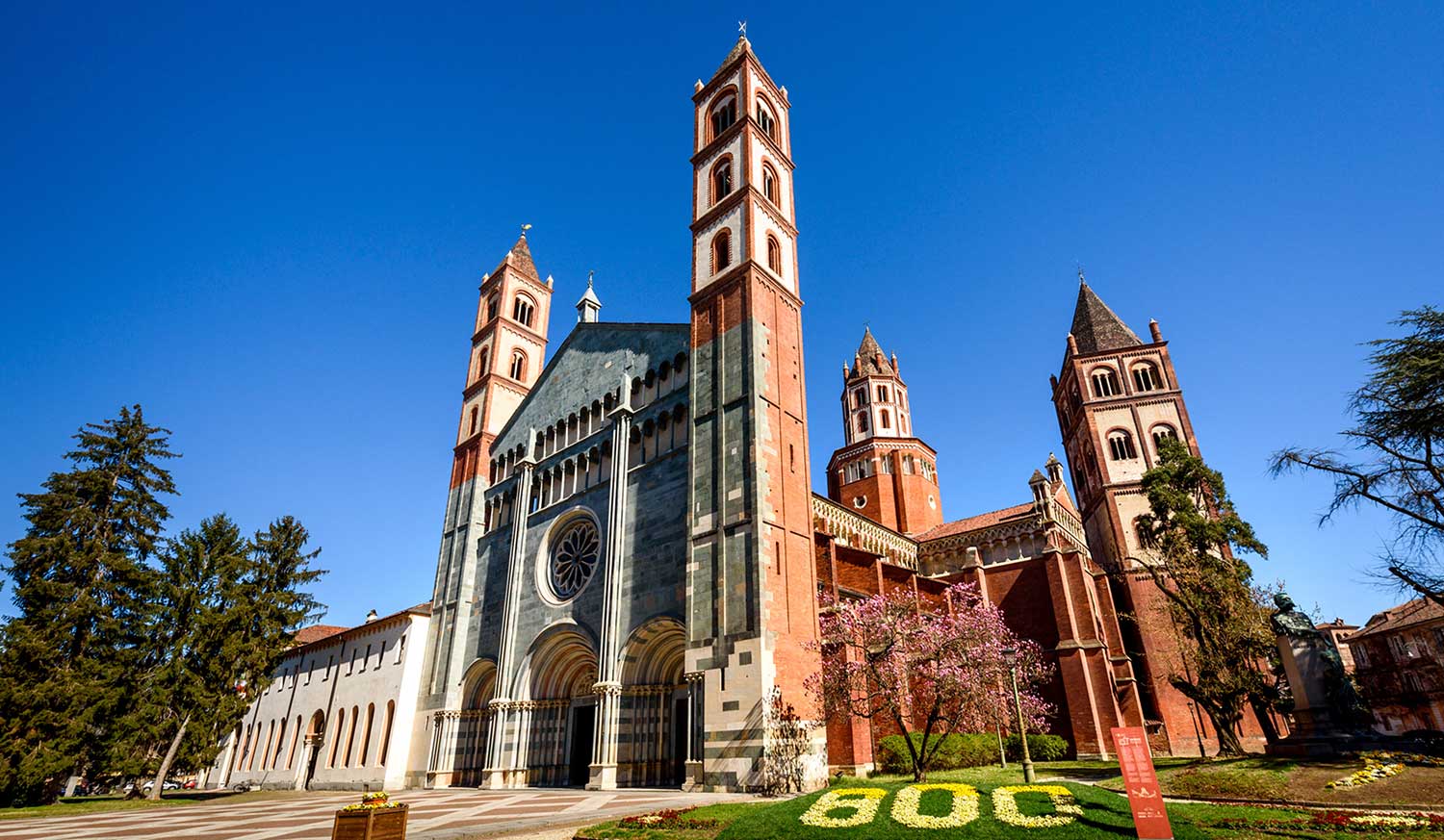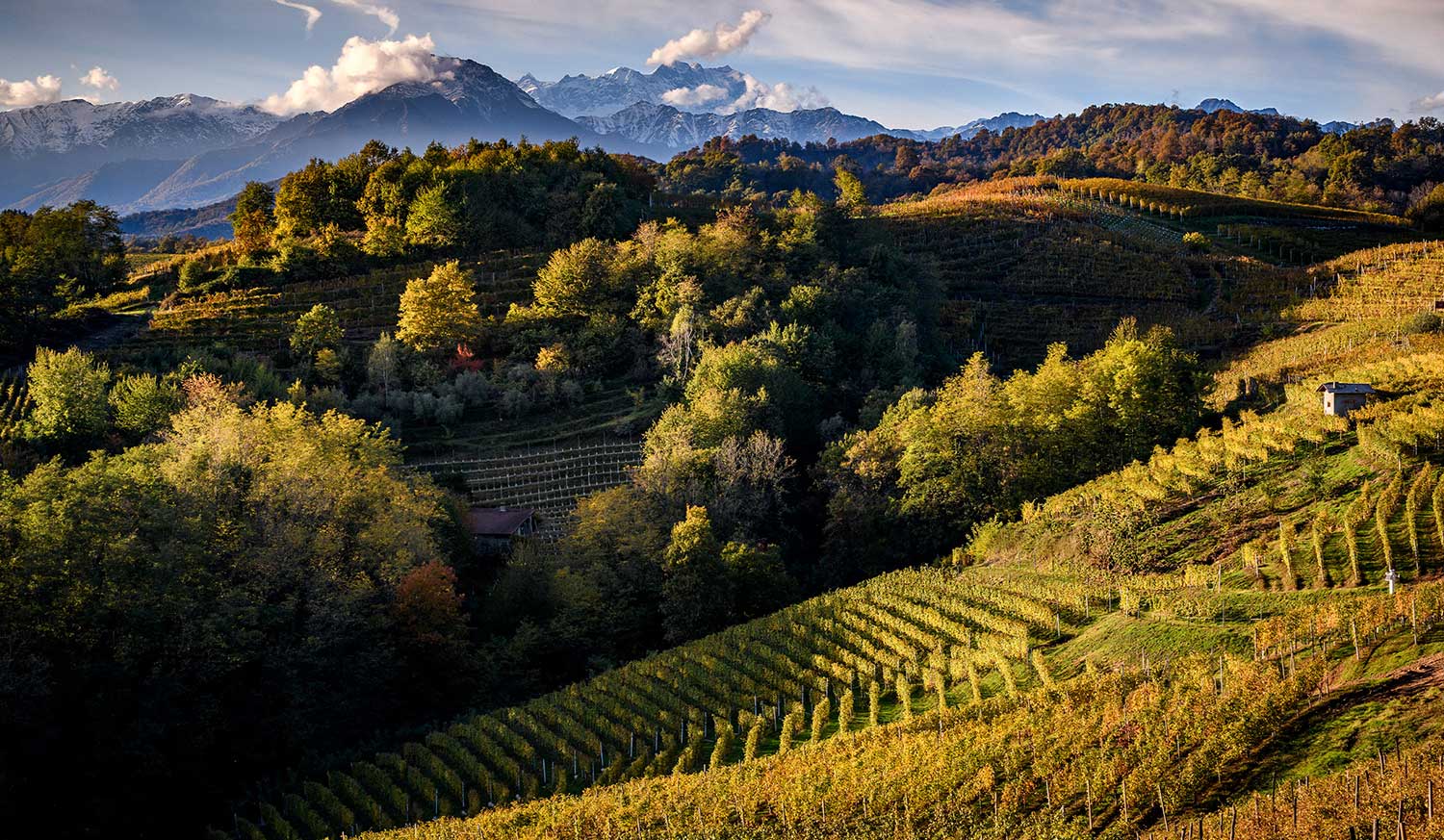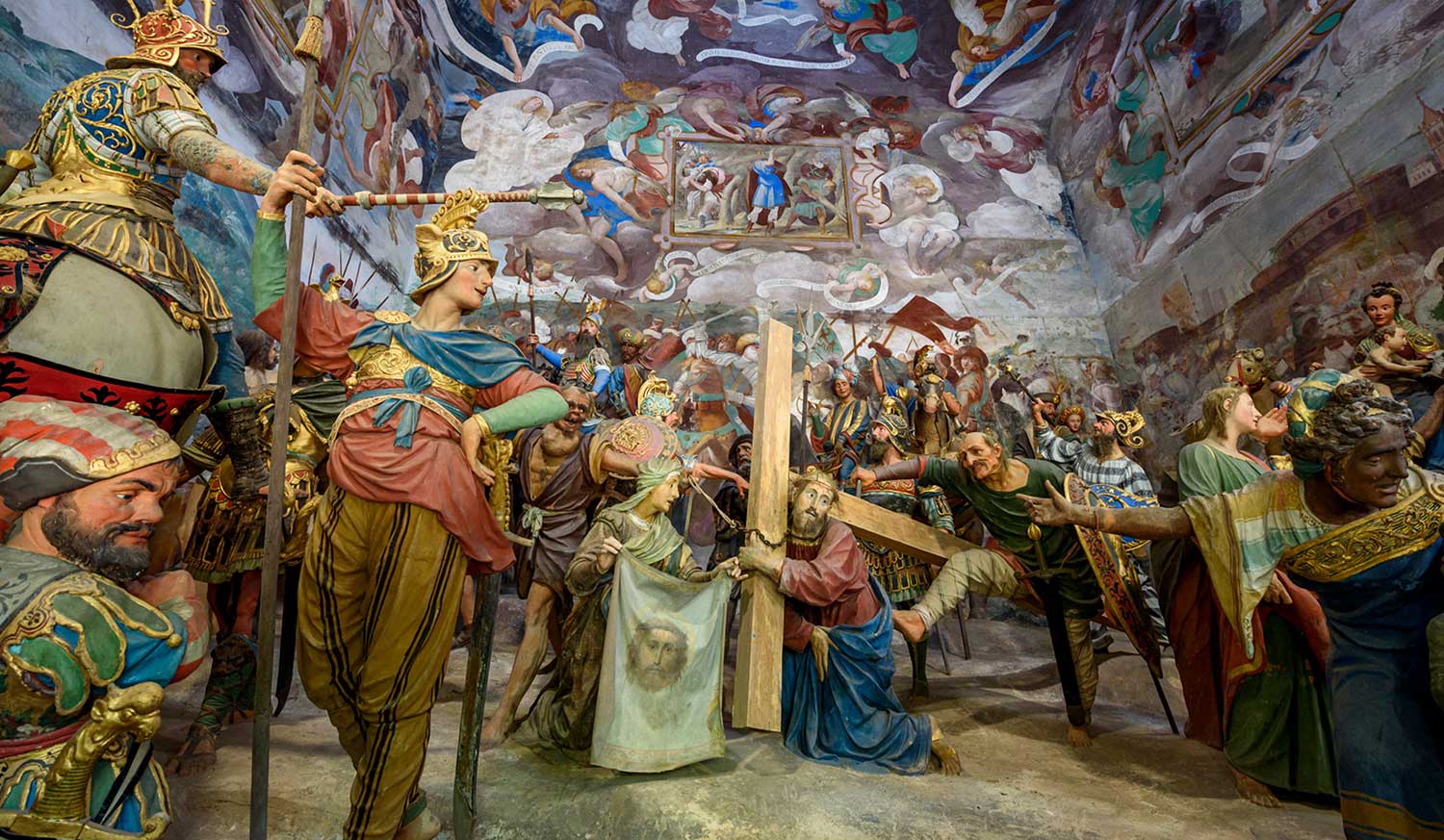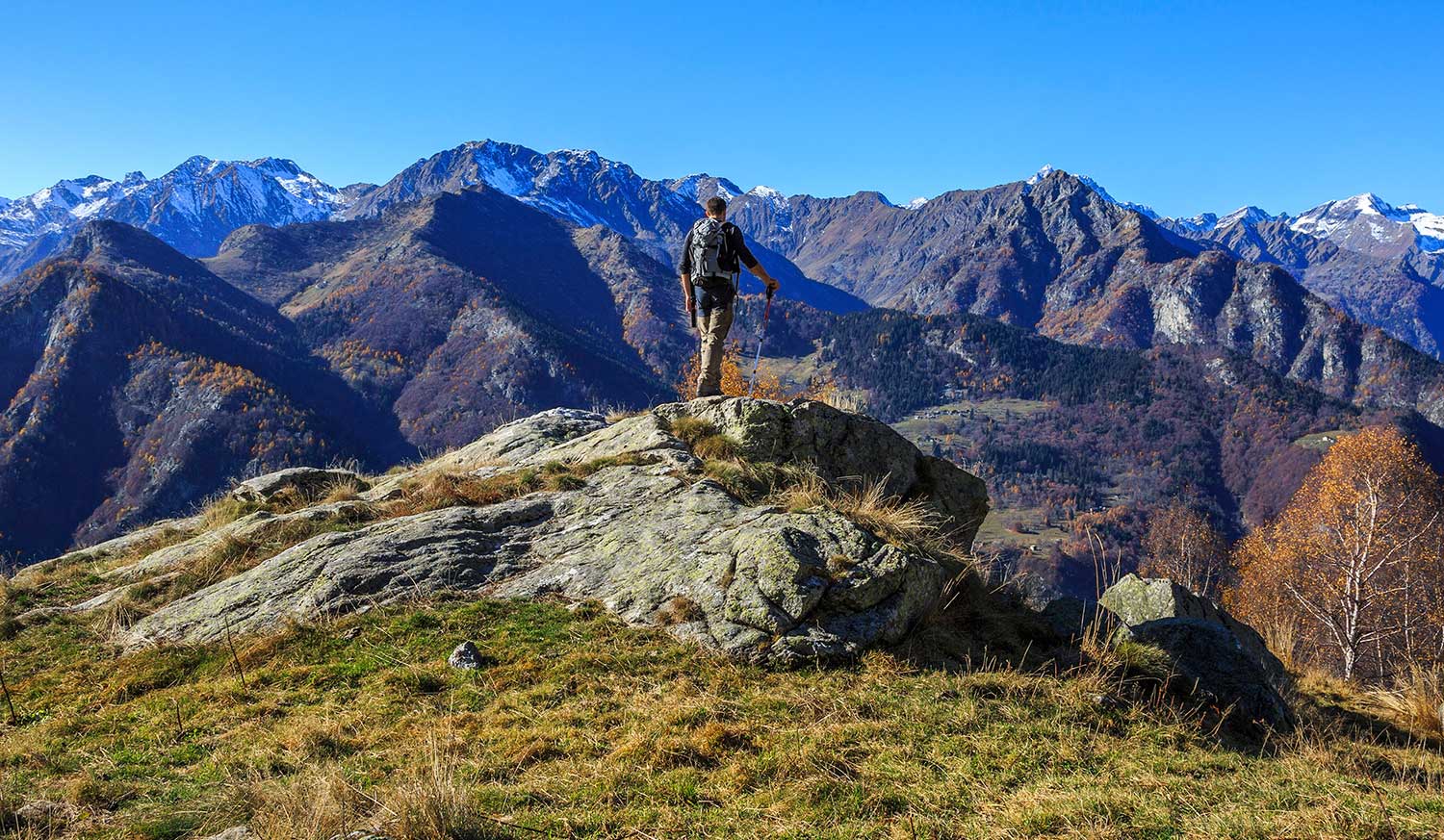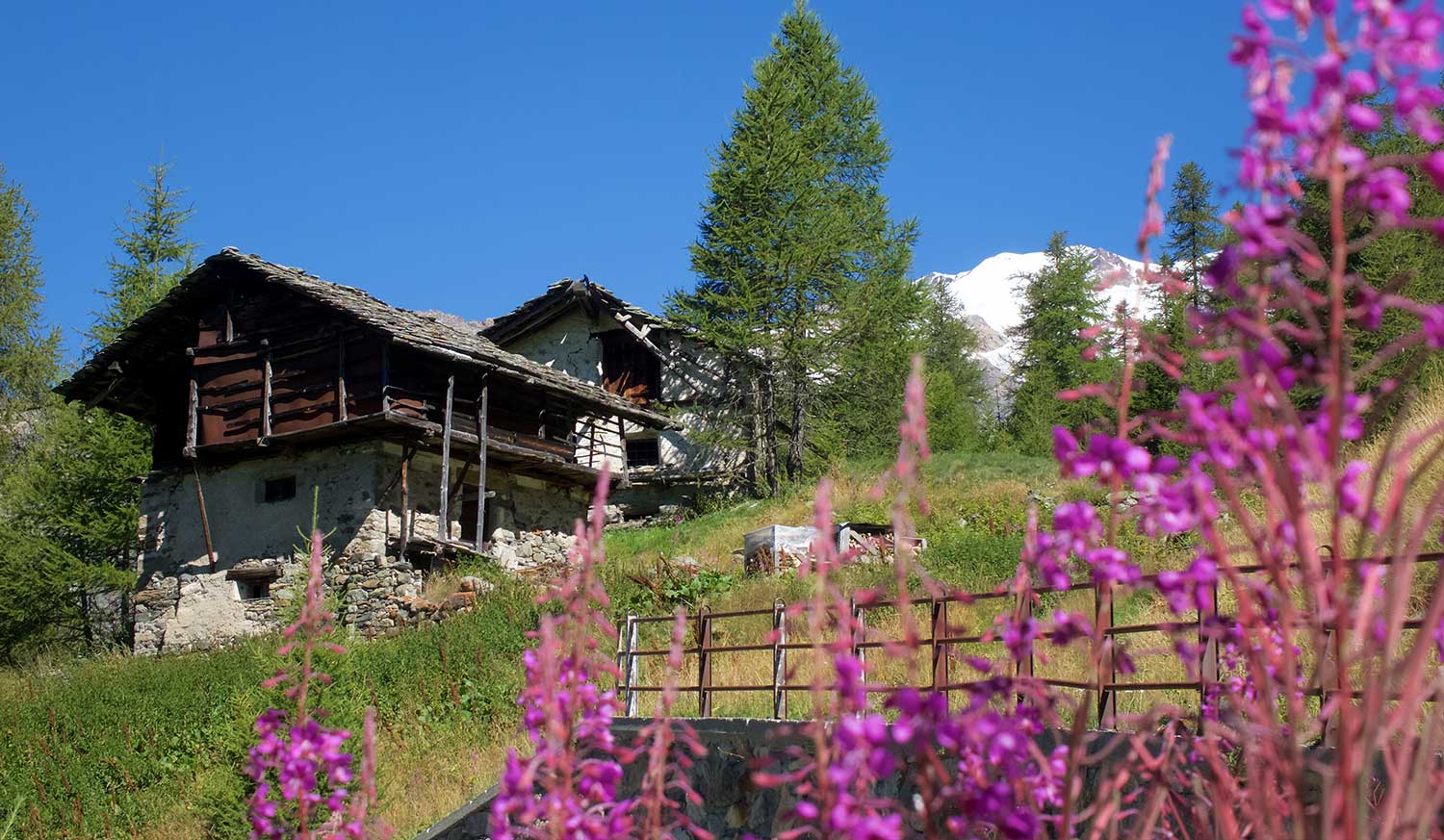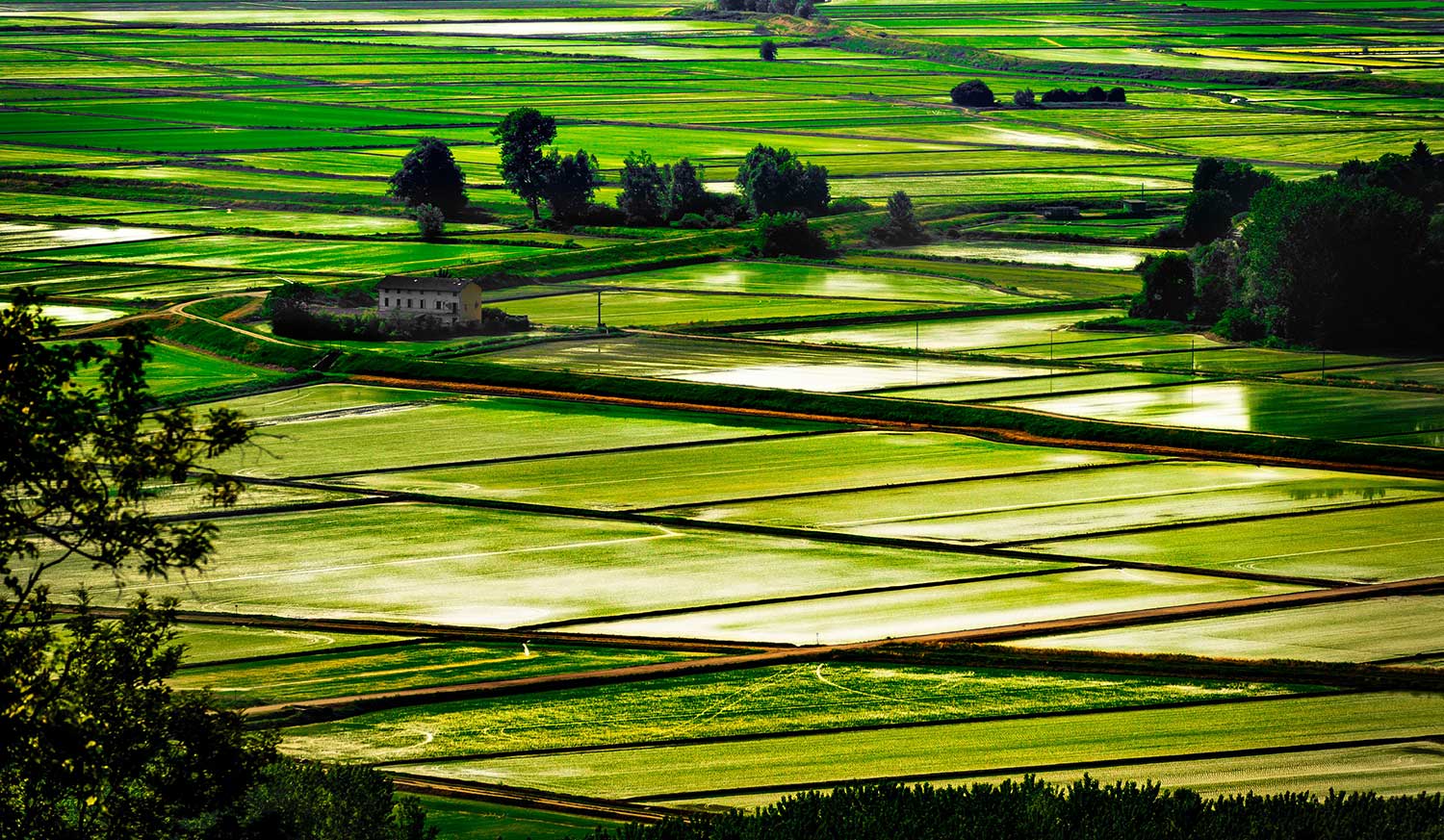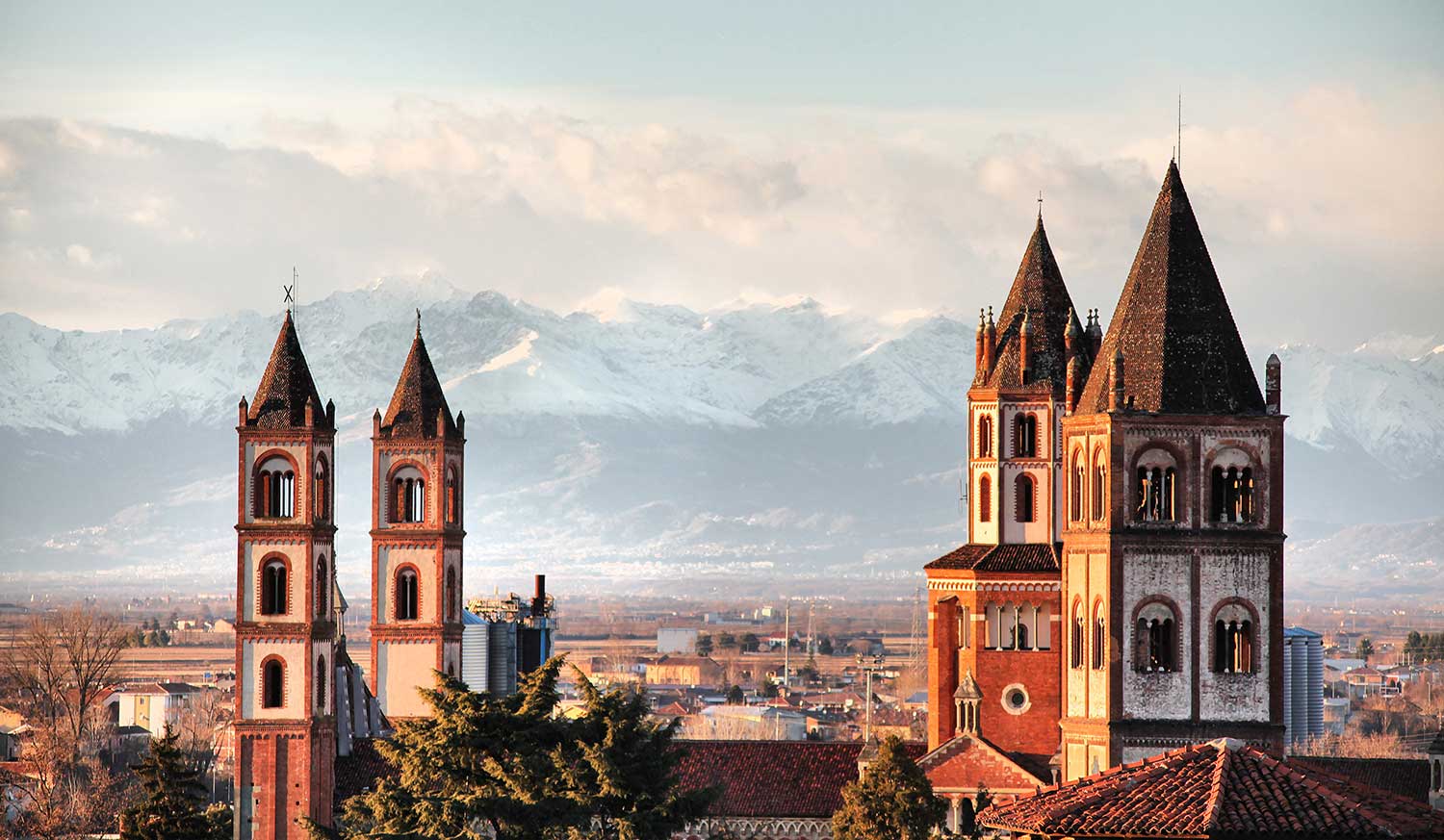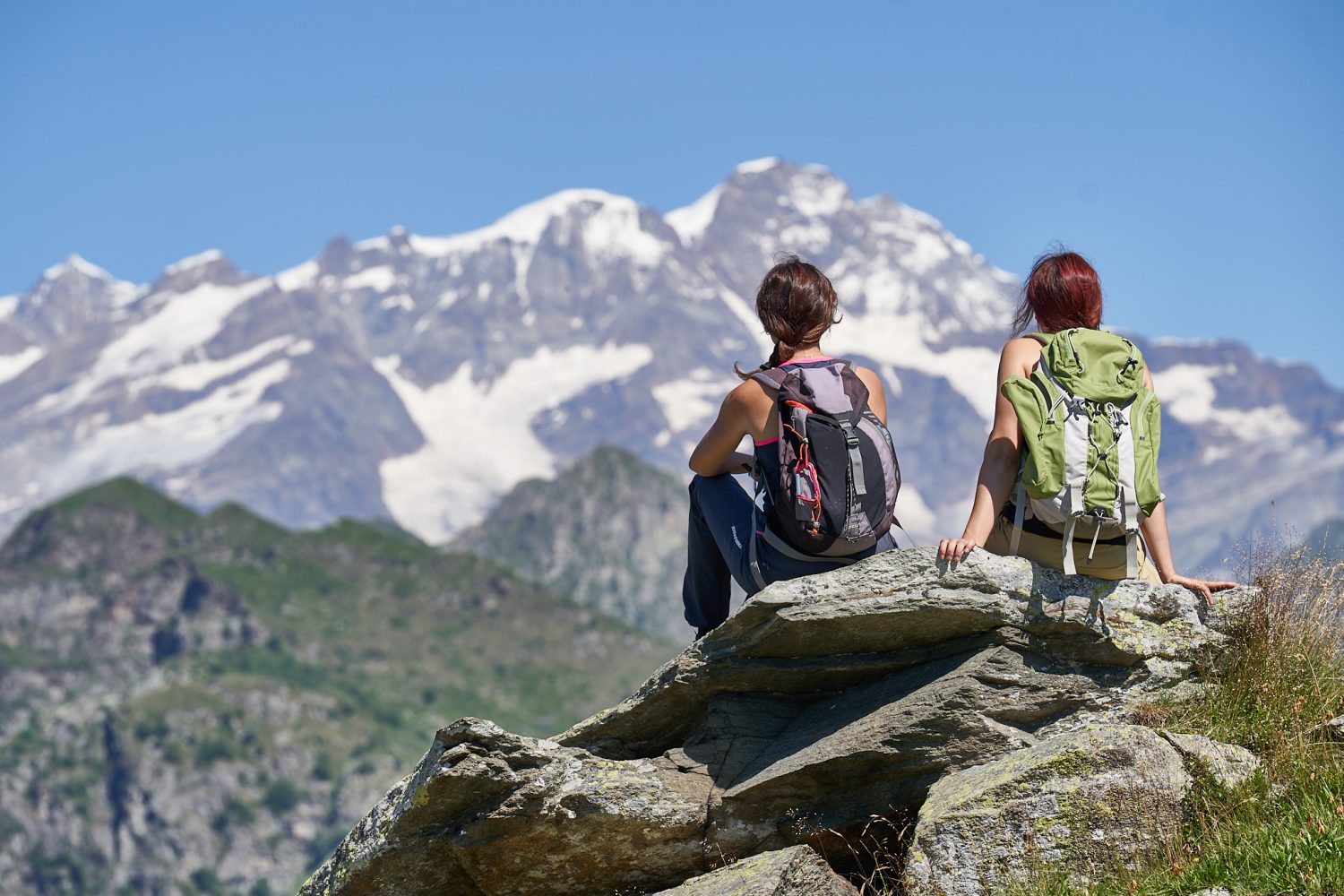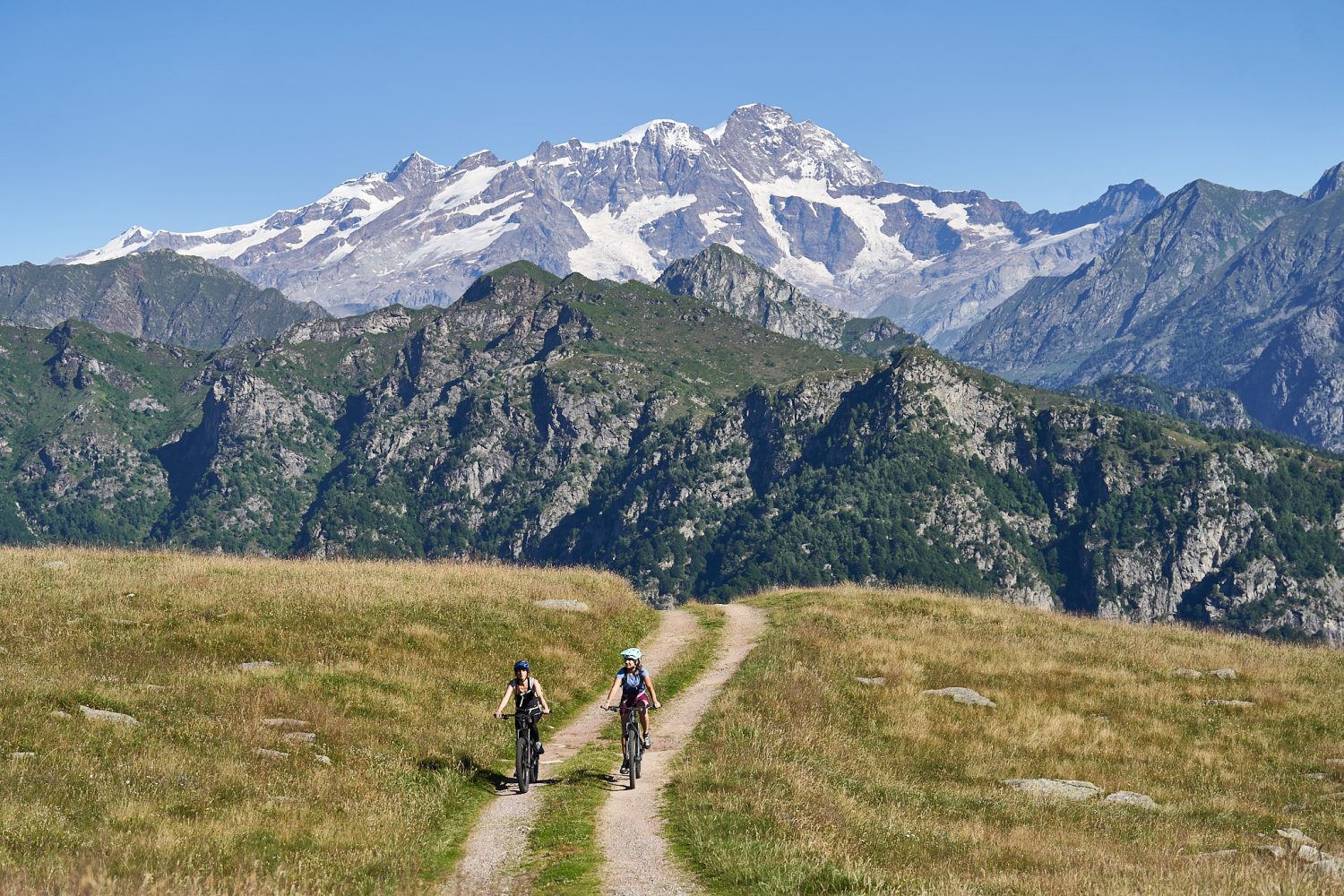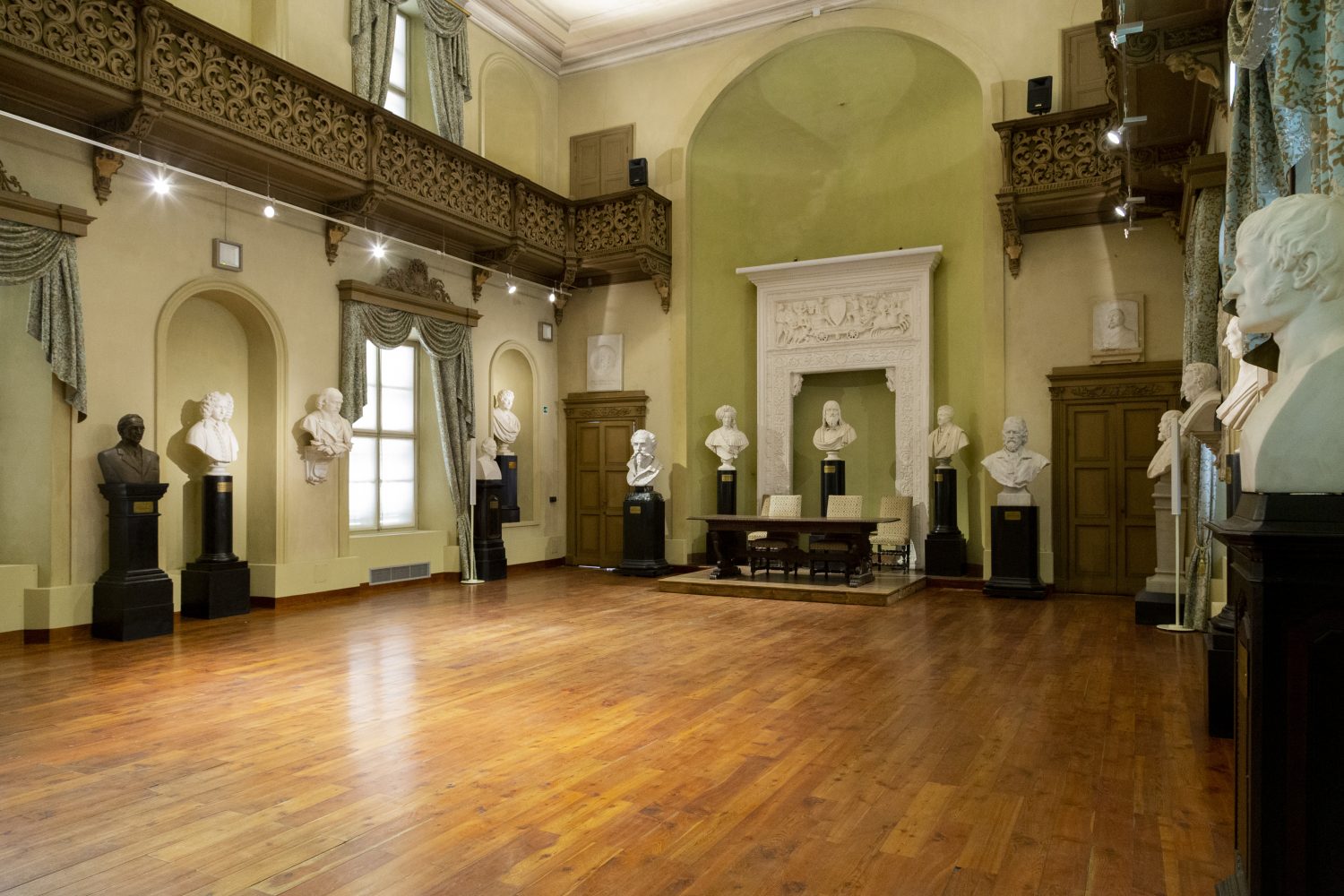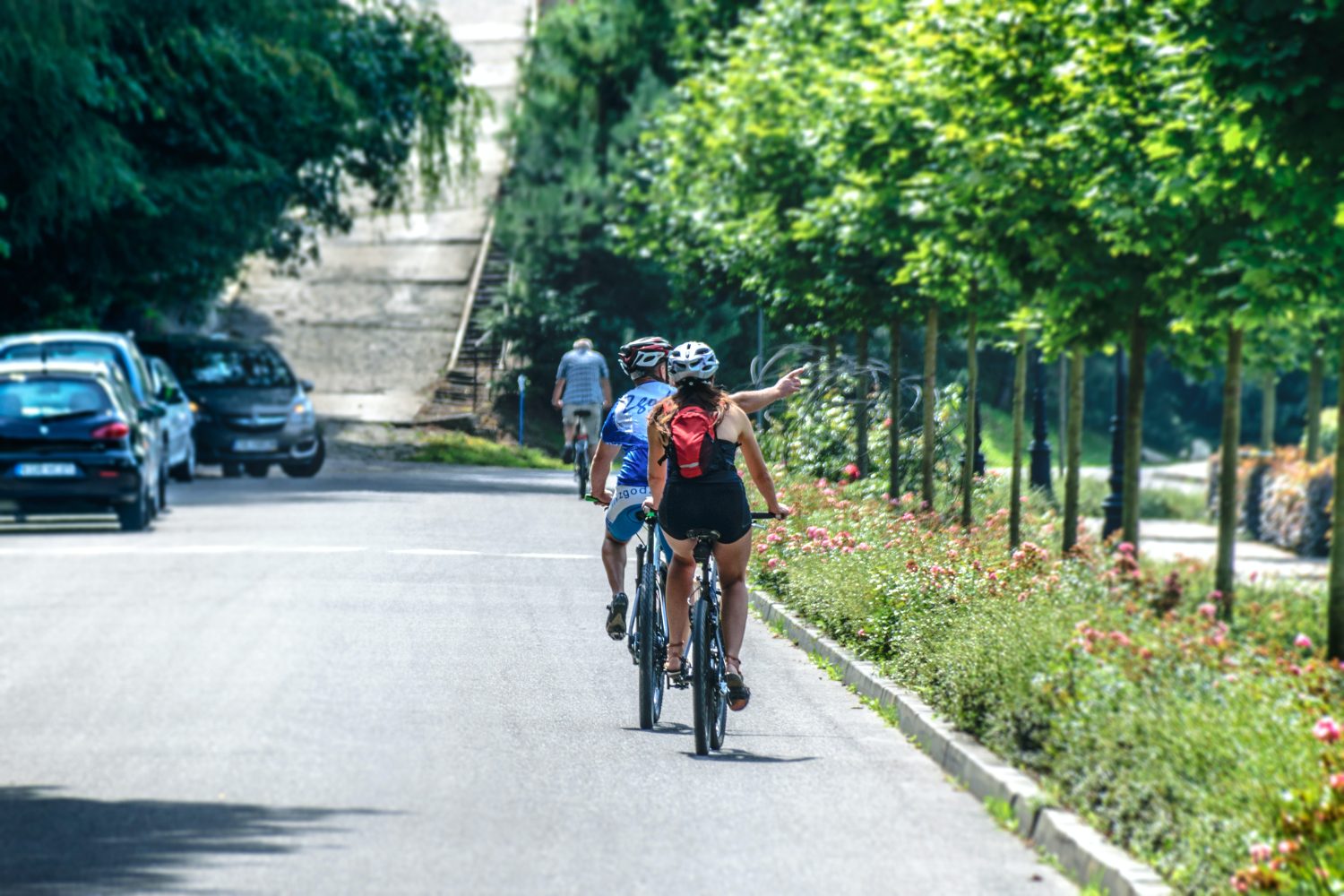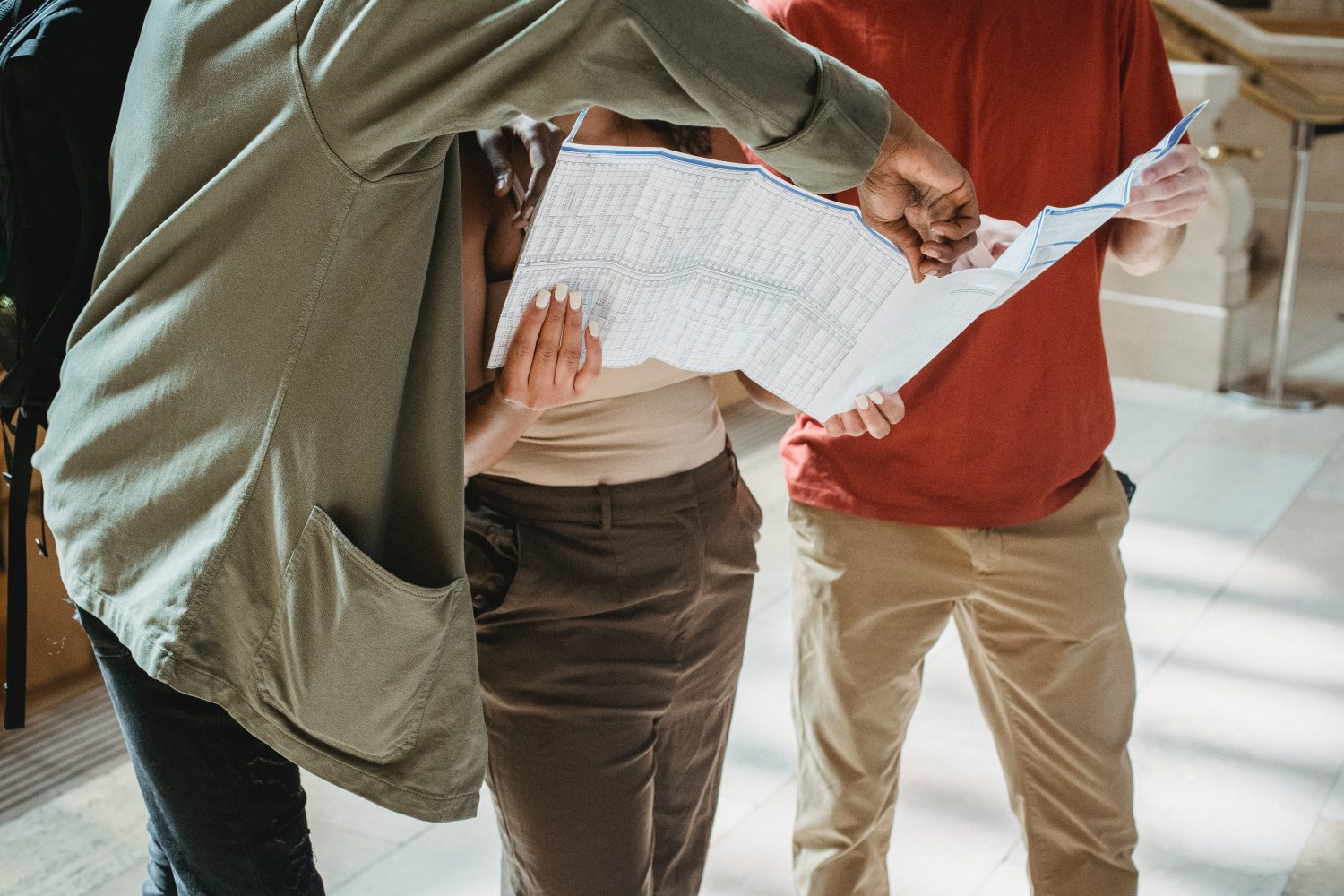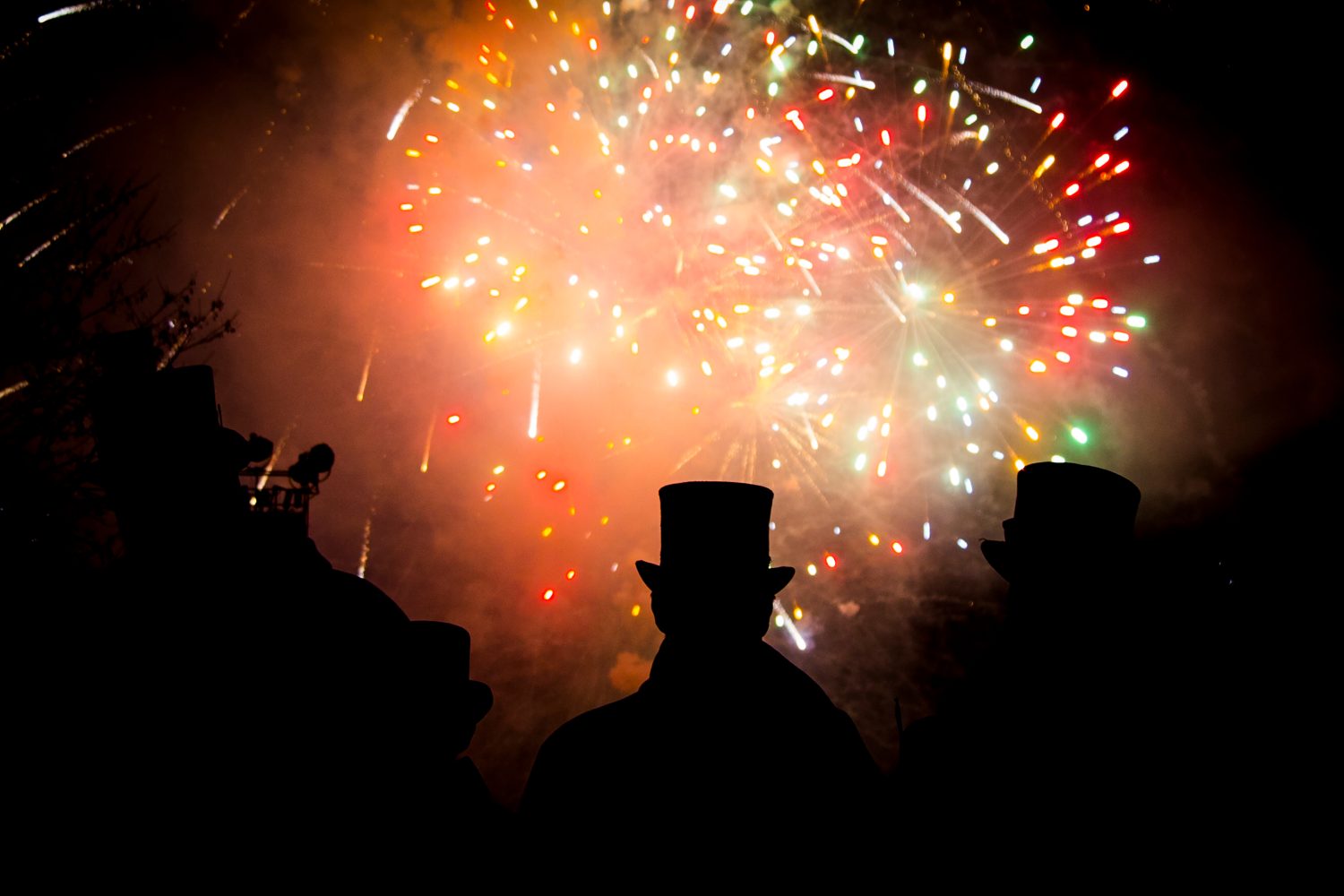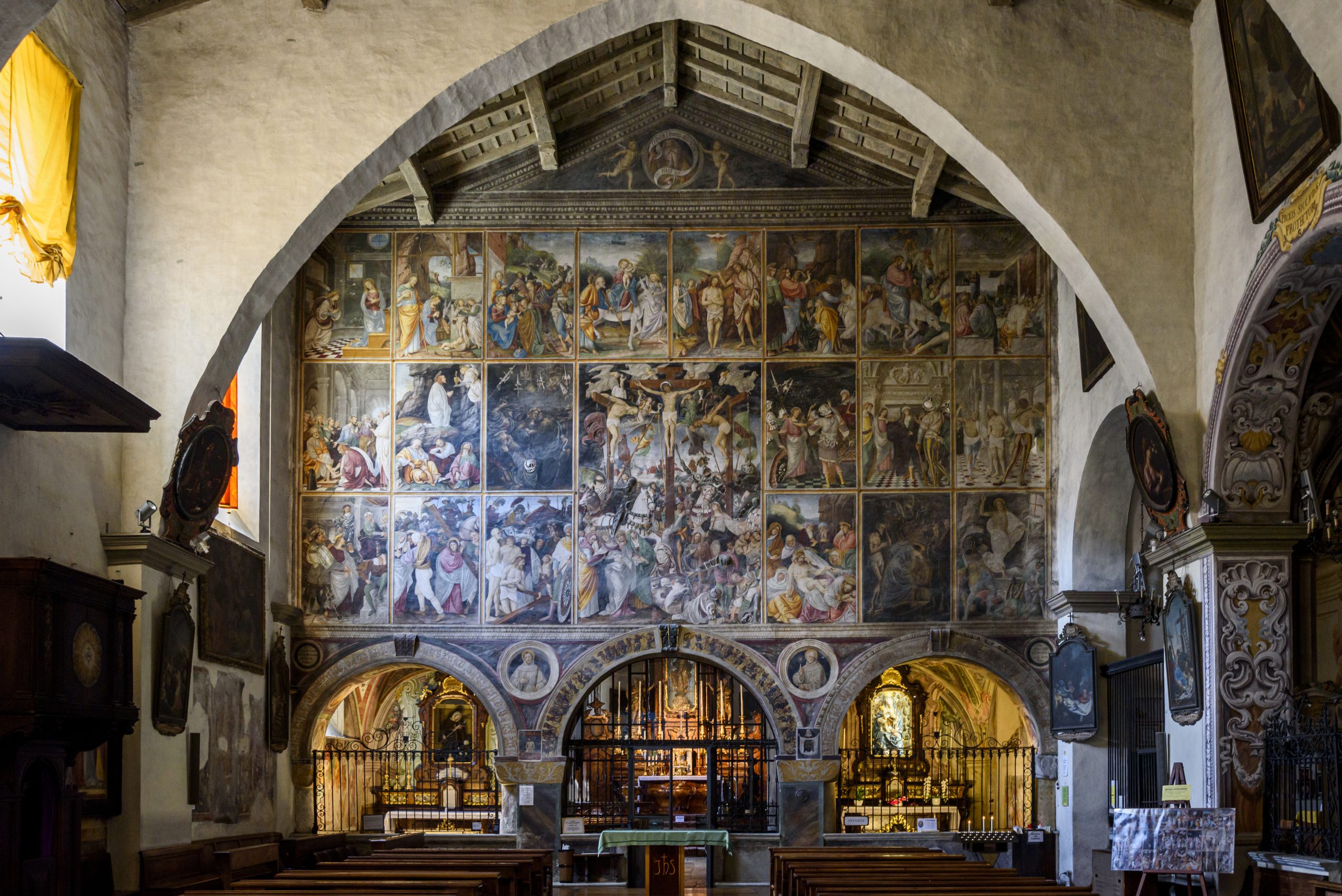
Church of Santa Maria delle Grazie
CHURCH OF SANTA MARIA DELLE GRAZIE
Located in Varallo, at the foot of the slope leading from Gaudenzio Ferrari Square to Sacro Monte and flanked by the convent of the order of the Missionary Sisters of Jesus Eternal Priest, Santa Maria delle Grazie is considered the prologue to the Sacro Monte experience. Its history is closely linked to the ancient Franciscan community headed by Father Bernardino Caimi, to whom we owe the foundation of the Sacro Monte in Varallo.
History and origins
The church was built almost at the same time as the architectural complex of Sacro Monte. It was at the end of the 15th century between 1486 and 1493, right at the base of the devotional route of Sacro Monte, that work began on the construction of the Church of Santa Maria delle Grazie and of the adjoining Franciscan monastery at the behest of Bernardino Caimi. The building is constructed in simple late Gothic forms and retains the architectural characteristics of Franciscan conventual churches, with a large partition wall (the so-called tramezzo) that served to separate the space reserved for the monks from that open to the faithful. In 1513, Gaudenzio Ferrari painted one of his most valuable works of art on this partition wall, a large fresco still known today as the “Gaudentian Wall”.
The Gaudentian Wall
Considered to be a monument of national importance and an undisputed masterpiece of Renaissance painting between Piedmont and Lombardy, the Gaudentian Wall is an amazing fresco that entirely covers the partition of the church. Gaudenzio Ferrari chose to create scenes from the life and passion of Jesus, starting with the Annunciation and ending with the Resurrection, dividing them into 21 frescoed panels, which he produced with expert communication skills. One cannot fail to be enchanted by the majesty of the work: the wall measures 8 m in height and more than 10 m in width. It is impossible not to notice the perfect correspondence between the scenes depicted on the Gaudentian Wall and those inside the Chapels of the Sacro Monte, underscoring the fact that both places are part of a single project and that the path of spiritual ascesis of Sacro Monte actually begins here.
highlights and must-see places
Art and culture, ancient traditions, excellent food and wine, and countless outdoor activities.
